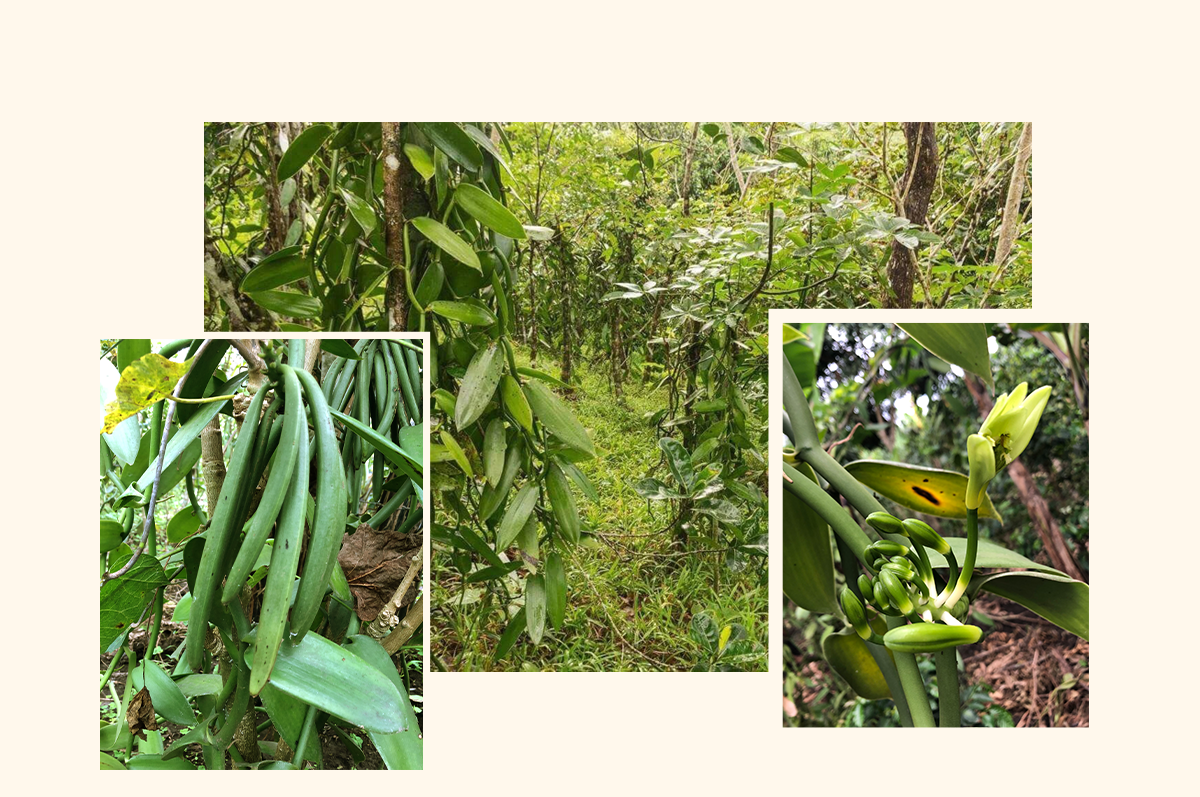Vanilla and the Rainforest!
The vitality of the rainforest is critical, with its well-drained soils, humus, lush landscape, and immense capacity to combat climate change. Within this delicate ecosystem resides a farmer facing a dilemma - whether to clear forest for short-term logging profits or establish more sustainable vanilla crops. Vanilla holds unique promise and power. If cultivated thoughtfully by farmers like him, interspersed with standing trees, vanilla production helps preserve the biodiversity and carbon sequestration that make the surrounding rainforest so valuable.
The vines enrich the soil, prevent erosion on slopes if planted strategically, and allow farmers to prosper without unnecessary clearing. With the right agricultural practices, vanilla enables
coexistence between farmers needing livelihood and forests deserving conservation for generations to come. The potential exists for vanilla to play a key role in balancing productive use of land and preservation of the irreplaceable rainforest habitats critically buffering the planet from climate
change, if we give this gift from nature the opportunity.

The main importance of vanilla to the rainforests
Vanilla cultivation is deeply intertwined with the preservation of invaluable rainforest ecosystems. More than simply a flavoring, vanilla offers a symbiotic relationship where vines prosper under native forest canopies while giving farmers incentive to conserve the biodiversity around them. Rainforests provide ideal climatic conditions for vanilla to thrive; meanwhile, vanilla plantations promote soil health and prevent erosion without requiring substantial clearing when intercropped responsibly amongst trees.
With interdependence comes influence - vanilla’s reliance on specific rainforest environments for growth fuels further justification for protecting these habitats beyond conservation reasons alone. As our planet faces the pressing threat of climate change, the rainforest’s contributions of water cycling, carbon sequestration and rich biodiversity act as irreplaceable buffers.
As vanilla demand rises, these ecosystems require expanded safeguarding as well. Their welfare links directly to that of local communities relying on vanilla for income and livelihood security. In concert, the rainforests and vanilla offer both ecological and economic stability. To lose one would destabilize the other, unraveling interconnected systems of climate regulation, employment and sustainable agriculture. Guided by the farmers living amongst these forests, judicious vanilla cultivation presents a model where producing food and preserving the environment around it can coexist.
The aim is to illustrate this symbiotic relationship, where vanilla holds potential to motivate rainforest conservation, support farmer livelihoods and maintain crucial ecosystems influencing global climate -
interlinked benefits hinging on thoughtful vanilla plantation practices guided by those relying directly on forest health.
